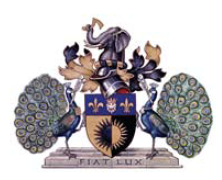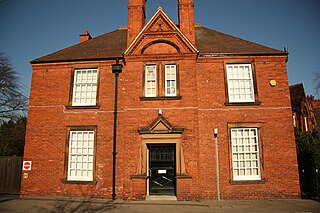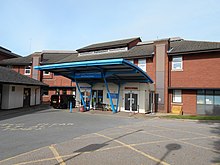
Moorfields Eye Hospital is a specialist National Health Service (NHS) eye hospital in Finsbury in the London Borough of Islington in London, England run by Moorfields Eye Hospital NHS Foundation Trust. Together with the UCL Institute of Ophthalmology, which is adjacent to the hospital, it is the oldest and largest centre for ophthalmic treatment, teaching and research in Europe.

The Mater Misericordiae University Hospital, commonly known as the Mater, is a teaching hospital, on Eccles Street in Phibsborough, Dublin, Ireland. It is managed by Ireland East Hospital Group.
The Seafarers Hospital Society, formerly the Seamen's Hospital Society, is a charity for people currently or previously employed by the British Merchant Navy and fishing fleets, and their families. It was established in 1821.

The London Fever Hospital was a voluntary hospital financed from public donations in Liverpool Road in Islington, London. It was one of the first fever hospitals in the country.

Cromer and District Hospital opened in 1932 in the suburb of Suffield Park in the town of Cromer within the English county of Norfolk. The hospital is run by the Norfolk and Norwich University Hospitals NHS Foundation Trust and provides an important range of acute consultant and nurse-led services to the residents of the district of North Norfolk.

The Royal Orthopaedic Hospital (ROH) is a National Health Service specialist orthopaedic hospital situated in Northfield, Birmingham, England. The ROH specialises in bone and joint problems.

St Leonard's Hospital is a hospital in Hoxton, London.

The Maida Vale Hospital for Nervous Diseases was a hospital that existed in west London from 1867 to 1993.

Liverpool Women's Hospital is a major obstetrics, gynaecology and neonatology research hospital in Liverpool, England. It is one of several specialist hospitals located within the Liverpool City Region, alongside Alder Hey Children's Hospital, Liverpool Heart and Chest Hospital, the Walton Centre, Mersey Regional Burns and Plastic Surgery Unit and Clatterbridge Cancer Centre. It is managed by the Liverpool Women's NHS Foundation Trust. The hospital receives approximately 50,000 patients annually and is the largest hospital for its specialism in Europe.

Highgate Hospital was a name used to refer to the infirmary building which opened in 1869 on the St Pancras side of Dartmouth Park Hill in Highgate, London.

Susan Bell McGahey was the matron of the Royal Prince Alfred Hospital from 1891 to 1904. McGahey was also co-founder of the Australasian Trained Nurses' Association in 1899 and president of the International Council of Nurses from 1904 to 1909.

The Grove Hospital, originally the Grove Fever Hospital, was a hospital for infectious diseases opened in Tooting Grove, London.

The David Lewis Northern Hospital was located in Great Howard Street, Liverpool. It was first established in 1834 and closed in 1978.

The Royal Eye Hospital was established in 1857 by John Zachariah Laurence and Carsten Holthouse as the South London Ophthalmic Hospital.

Central London Ophthalmic Hospital, London was a hospital in Gray's Inn Road, London.

Taunton and Somerset Hospital was a hospital in Taunton, Somerset.
Trowbridge Cottage Hospital, was founded in 1870, and opened in The Halve in Trowbridge in 1886. In 1895, the hospital had ten beds. It was later known as Trowbridge District Hospital, and was demolished in the 1960s. It has been replaced with Trowbridge Community Hospital.

The Bromhead Institution for Nurses and the Bromhead Nursing Home, was a healthcare facility in Lincoln.
Dorking Cottage Hospital was a healthcare facility in Dorking, Surrey.
Anna Beatrix Ballie R.R.C. (1864–1958), was an inspiring manager who established the first provincial Preliminary Training School for Nurses, and served as a Principal military Matron of Bristol during the First World War. She was one of the first supporters and promoters of the College of Nursing.



















